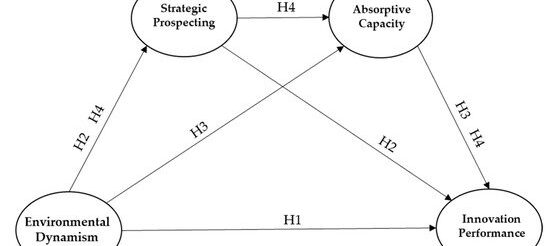Sustainability, Vol. 12, Pages 9999: A Study on the Mechanisms Linking Environmental Dynamism to Innovation Performance

Sustainability, Vol. 12, Pages 9999: A Study on the Mechanisms Linking Environmental Dynamism to Innovation Performance
Sustainability doi: 10.3390/su12239999
Authors:
Eun-Hwa Seo
Choo-Yeon Kim
Kwangsoo Kim
The purpose of our study is to examine the mechanisms that link environmental dynamism to firms’ innovation performance. Although there have been extensive studies on the effect of environmental dynamism on innovation performance, they have focused primarily on its direct effect and have resulted in rather inconsistent research findings. Thus, to explain the relationship between environmental dynamism and innovation performance more clearly, we intend to investigate the mechanisms through which environmental dynamism influences innovation performance in this study. Specifically, we aim to examine the mediation effects of strategic prospecting, absorptive capacity, and combined strategic prospecting–absorptive capacity on the relationship between environmental dynamism and innovation performance. Based on data collected from 266 small and medium-sized firms in Korea, our study has found that, assuming a causal interdependence between the mediators, both strategic prospecting and combined strategic prospecting–absorptive capacity mediate the relationship between environmental dynamism and innovation performance. It has also been found, however, that absorptive capacity alone does not mediate the relationship between environmental dynamism and innovation performance, while absorptive capacity mediates the relationship when it is linked to strategic prospecting. The results of our study further reveal that no direct effect of environmental dynamism on innovation performance exists, implying that the significant effect of environmental dynamism on innovation performance demonstrated in previous studies may be spurious in nature. Based on the findings, we present conclusions, theoretical and practical implications, and limitations with future research directions.
